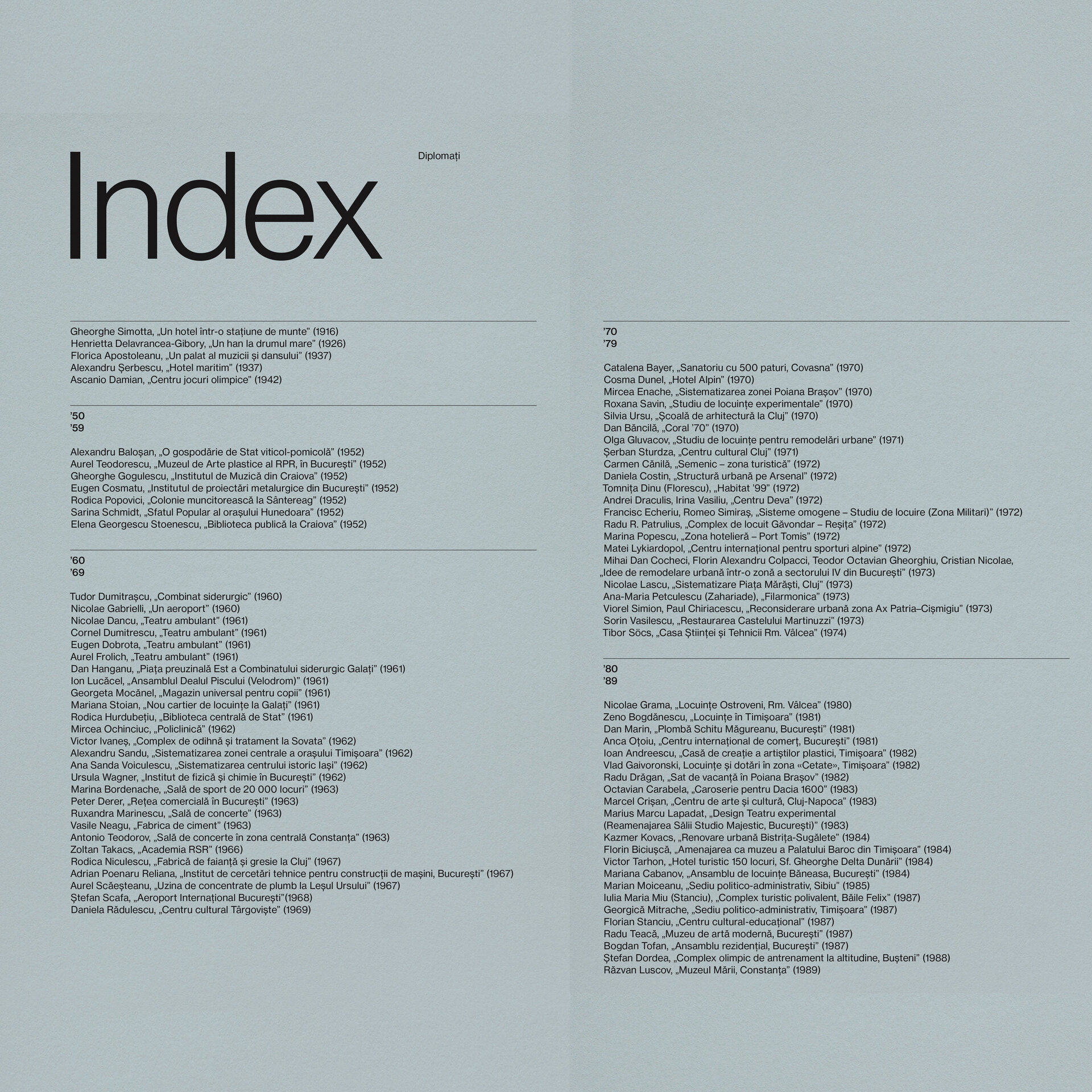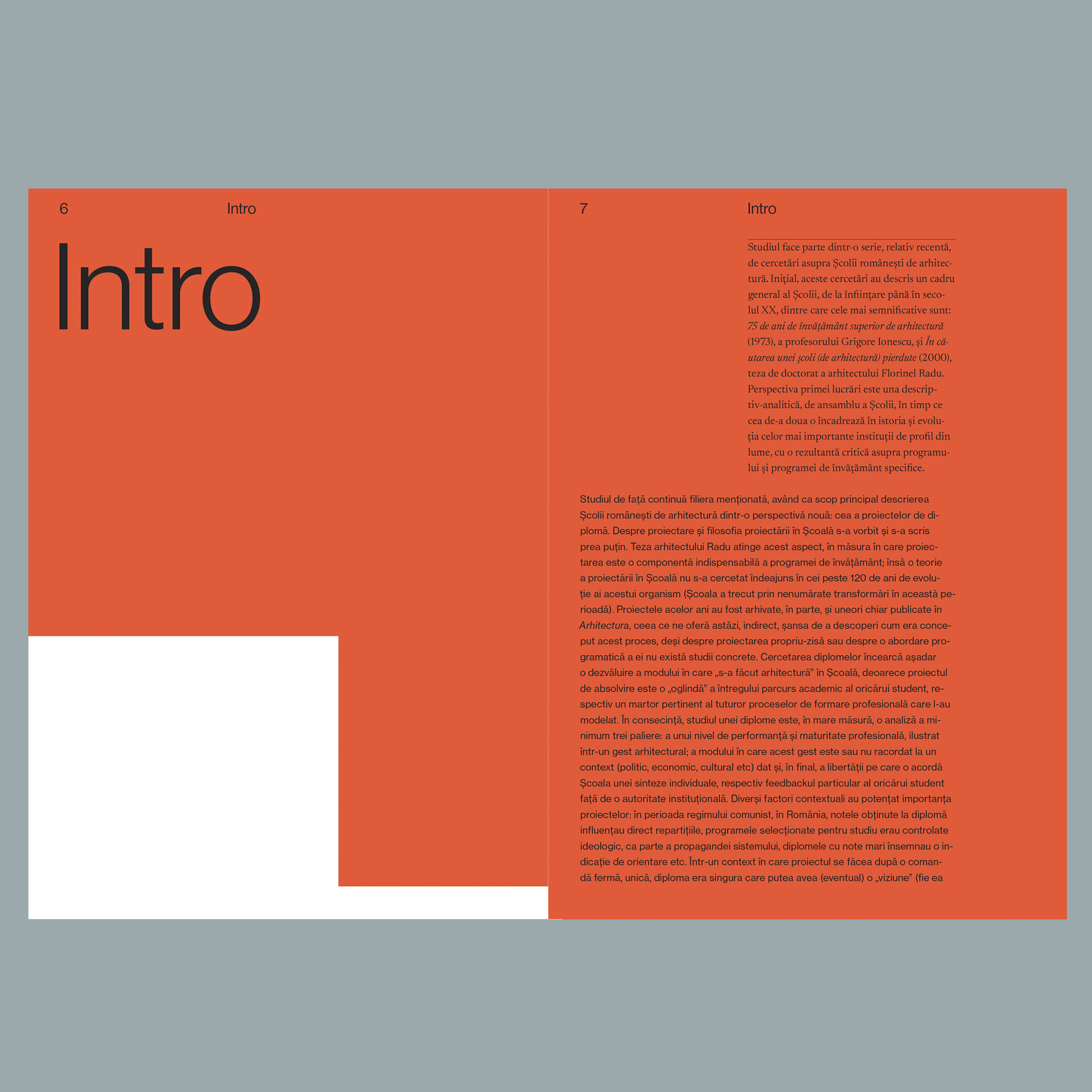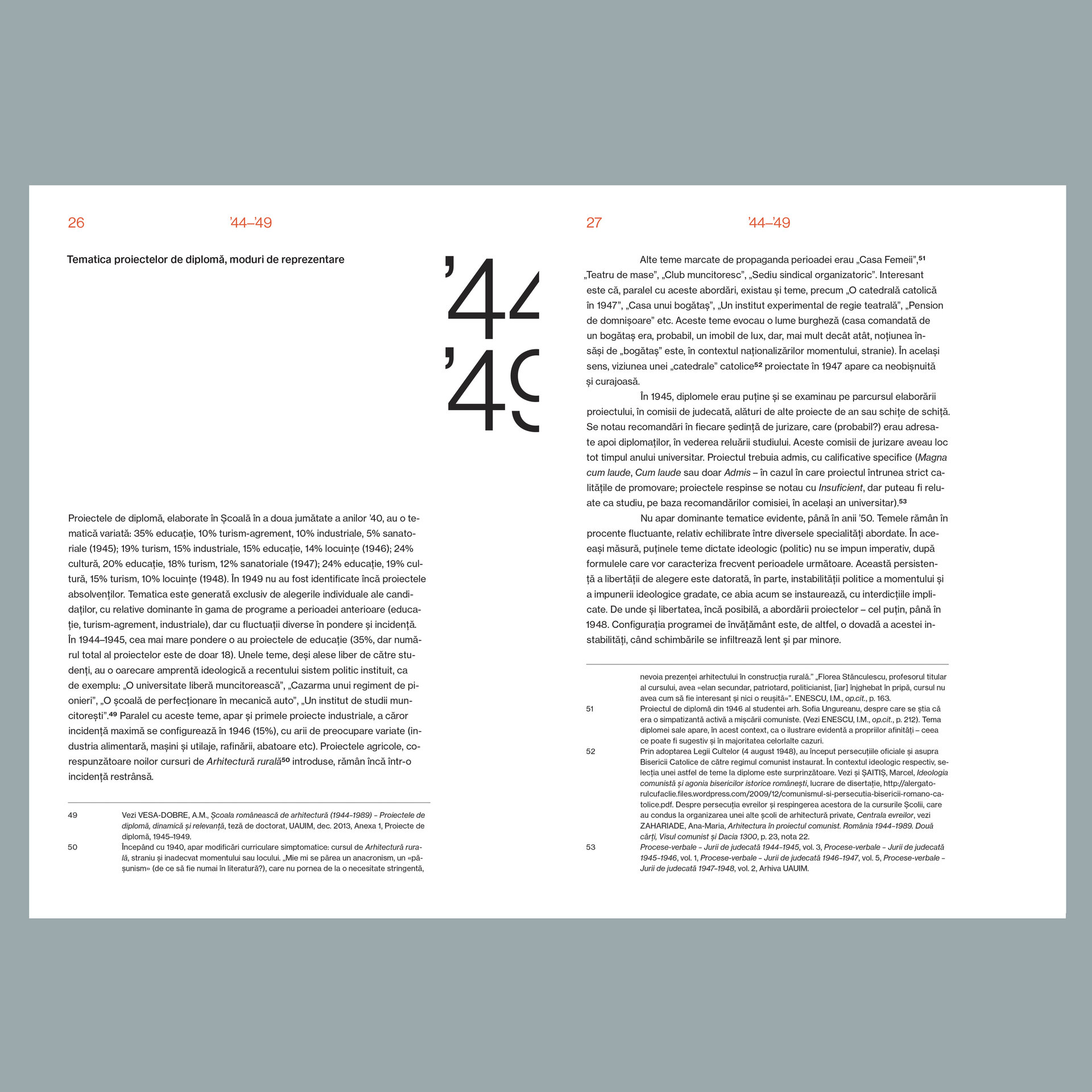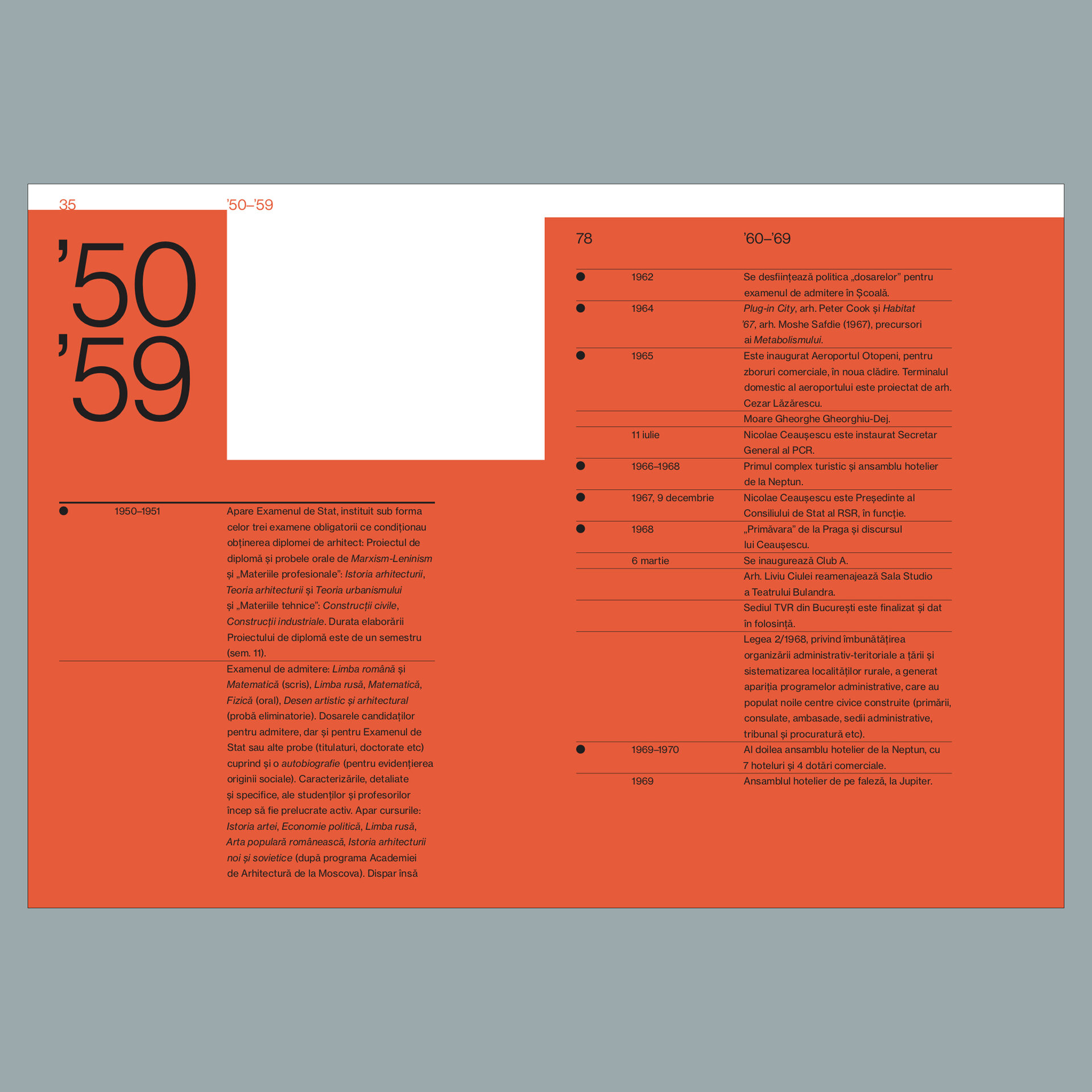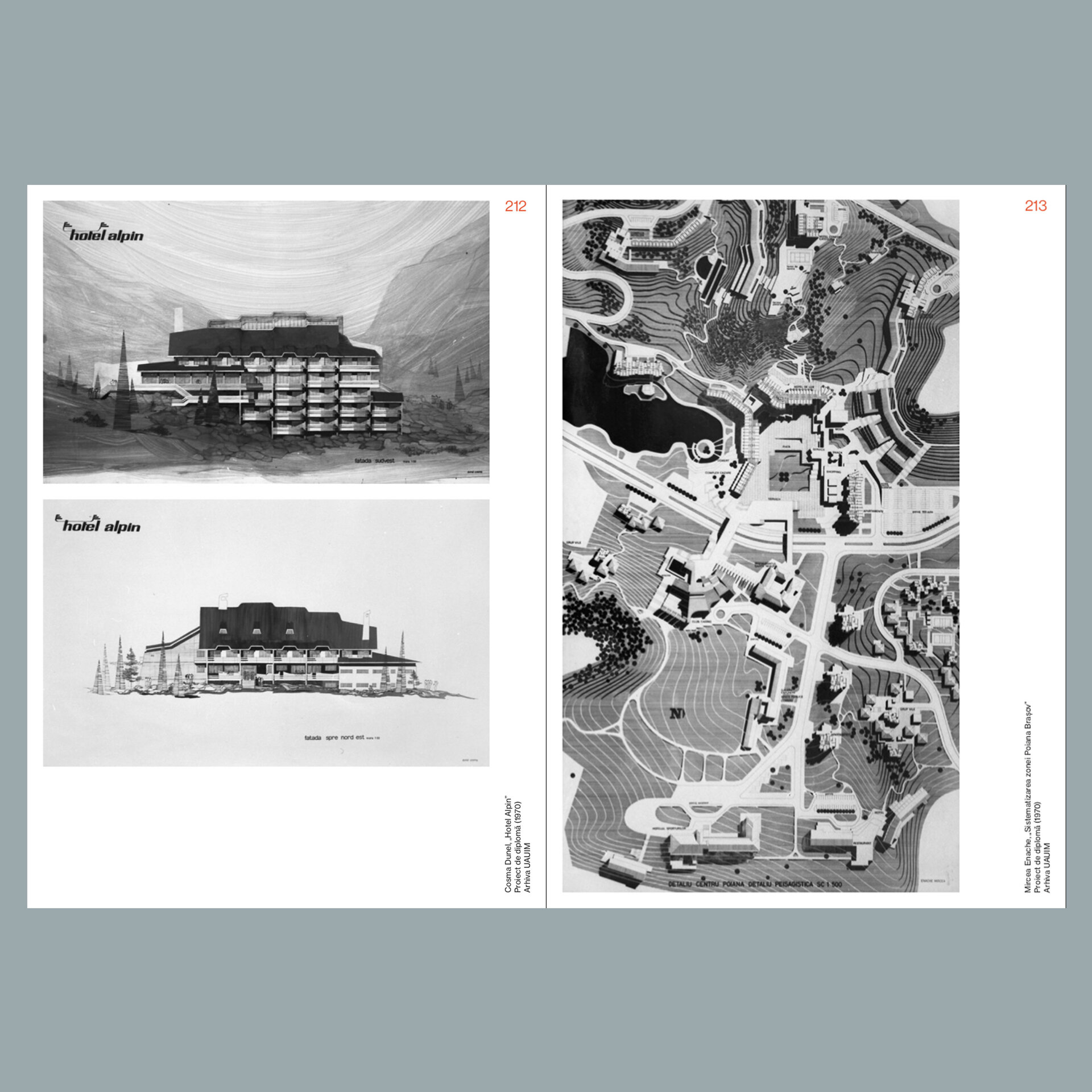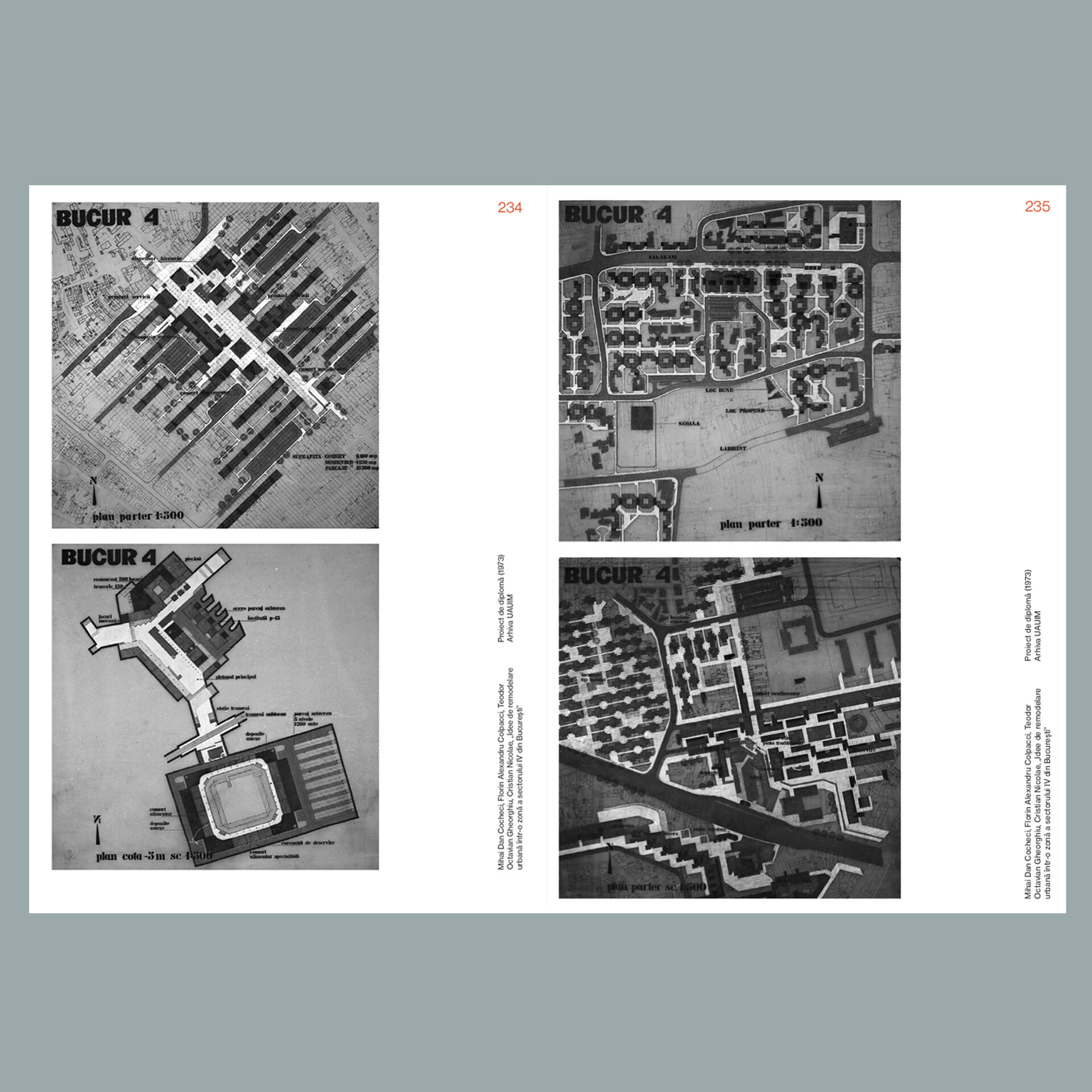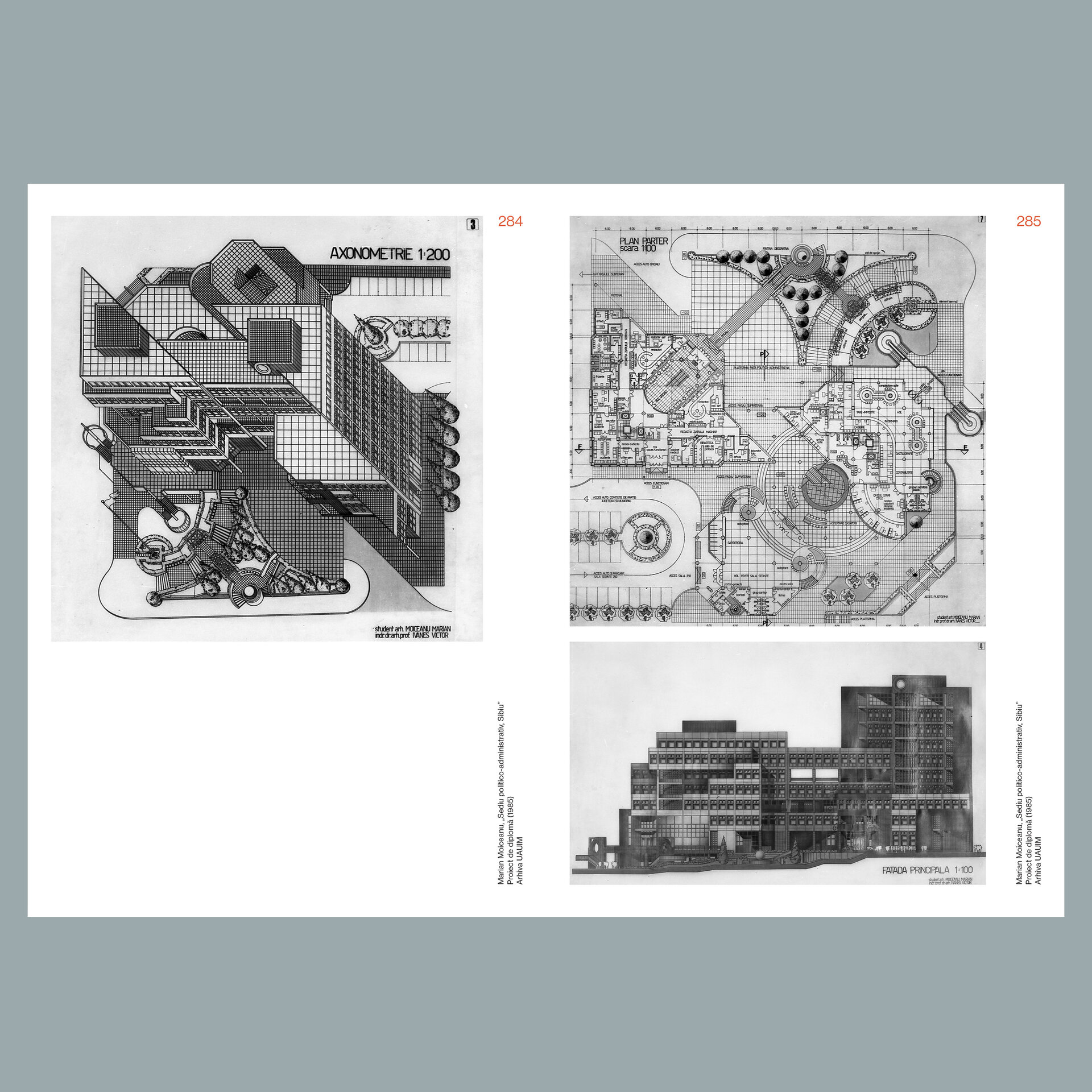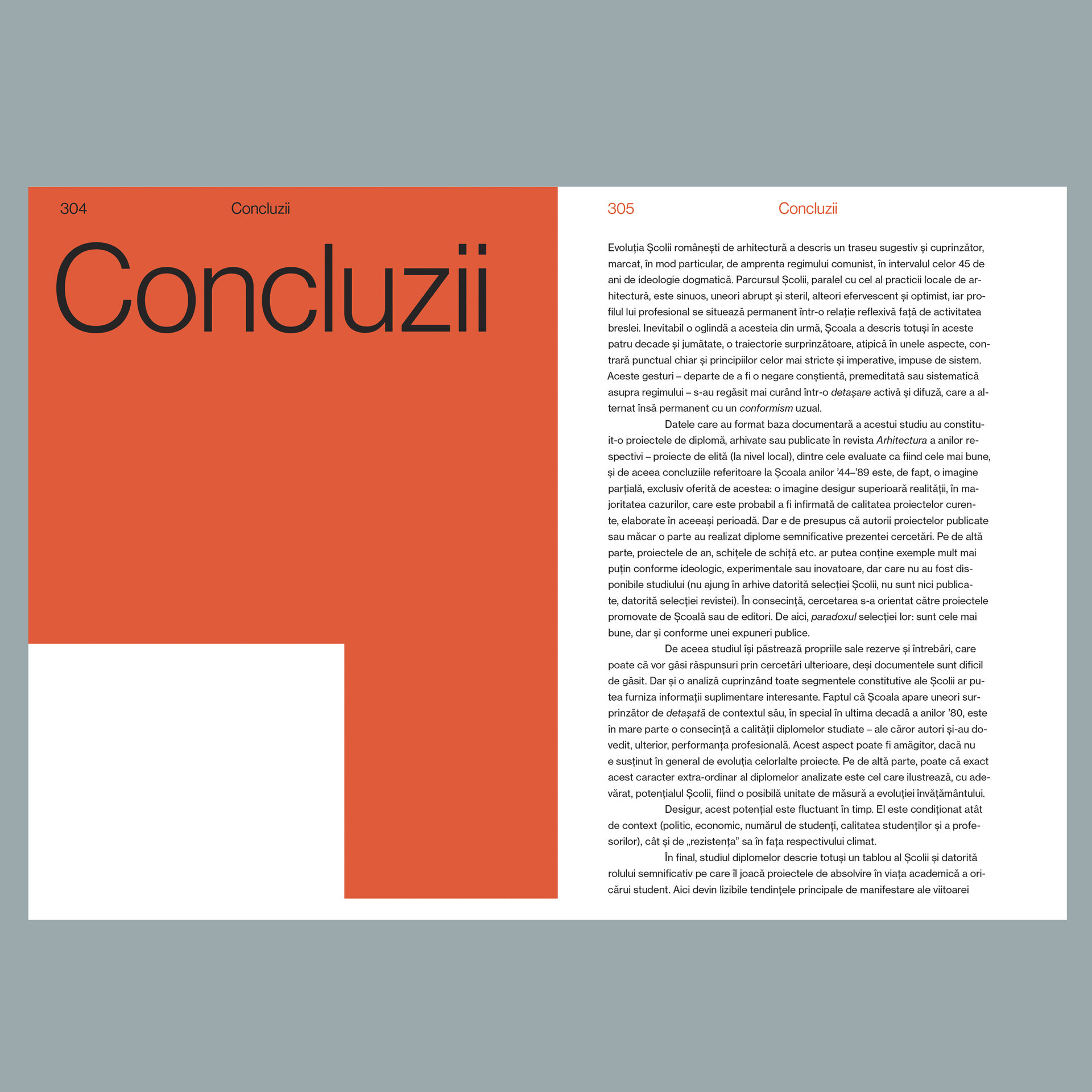
- Prize of the “Research through Architecture / Architecture Books” section (ex aequo)
Diploma Box
Authors’ Comment
The study is part of a research series of the Romanian School of Architecture in Bucharest, focusing on Diploma projects developed between 1944 and 1989. The book includes 86 projects of the best graduate architects from the communist period, students who later became prestigious professionals of the guild.
Structure of the book: Intro, 5 Chapters (Decades), Conclusions.
The research is based on the author's PhD thesis, "Romanian School of Architecture (1944-1989) - Diploma Projects, Dynamics and Relevance" (UAUIM, Bucharest, 2013).
"The research is organized into five distinct parts, each representing a defining period for analysis, (largely generated by the respective political context): '45-'49 (the ideological gap), '50-'59 (Stalinization and industrialization of local architecture), '60s (liberalization), '70s (reconfiguration of typification), and '80s ("the freeze"). A brief historical survey, preliminary to the 1944 moment, opens the reading of the School and its general climate. This division by decade has its share of arbitrariness. But I have considered that certain defining lines of each decade outline specific configurations, easily collectible throughout the whole period under analysis." (p.10)
"The representation of diploma projects was spectacular during this period. Various hand techniques were used, from ink wash (Fr. lavis), watercolour, pencil to ink, airbrush... and many others, improvised. The titles of the drawings had a strong impact on visibility and always in a design correlated with the theme; various fonts were used, some authentic, original, others custom. A frame format was established, which was mandatory, and had a certain flexibility, in four modulations - 70, 95, 120 or 140 cm wide, unfolded in several sizes." (p.114)
"Car Body for "Dacia 1600" was the most appreciated Design diploma of the 1983 session, presented by the student architect Octavian Carabela. The project theme was taken from a proposal by the Pitesti Car Factory for the design of a more powerful prototype, equipped with a 1,600 cm3 engine.
(...) The prototype's drawings are exuberant: exploded axonometric, ergonomics, front projection views, while the model is impressive in terms of detail - the scale at which it is executed is not very clear, but the care taken to illustrate, as faithfully as possible, the three-dimensional modelling of the project is evident. Although the project did not go into production, supporting such an idea at the diploma session was welcome and certainly a novel and attractive gesture." (p.264)
"Overall, however, the atmosphere of the School is radically supportive and optimistic. With the removal of the policy of admission based on personal files (1962), the cultural level of the students also increases significantly, which indirectly confirms the profile of the thematic dominance after 1965 as well, since the industrial diplomas and the massive systematizations (as landmarks of previous ideological implementations) are canceled. The students' interest in architecture is visible and passionate, both formally and in a substantial semantic content. The diplomas reach extraordinary dimensions, sometimes with as many as 40 drawings in rendu beaux-arts, in a natural reinstatement of a prestigious tradition of the School.
Clearly then, the conformism of circumstance hides the fundamental detachment in terms of the relationship with the political ideology of the late 1960s. The flagrantness of this hypostasis would, however, be "adjusted" accordingly over the next two decades, and systematically corrected by a sustained rigour of Party and State directives. Their strict and concise wording will reposition the new thematic dominants, either through powerful mechanisms external to the School, derived from actual practice and normative legislation, or through imperatives of its own coercively manipulated internal structures." (p.311)
- People at work in their homes
- Diploma Box
- Courtyards of Bucharest. The hidden potential of urban morphology
- Alfred Popper, 1874-1946: the (re)discovery of an architect
- Eternal Architecture in Romania. Cemeteries, mausolea, funerary buildings in extra-Carpathian territory (1830-1939)
- Heritage, Landscape and Restoration of Historical Gardens
- Architect Ion Căpșuneanu. Achievements and sufferings
- Toma Stelian House: a historical perspective
- Isolation in a series of liminal states
- Best practice guide: Băile Govora case
